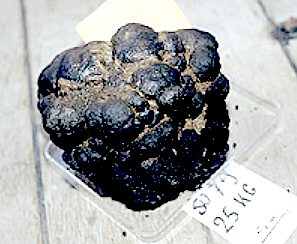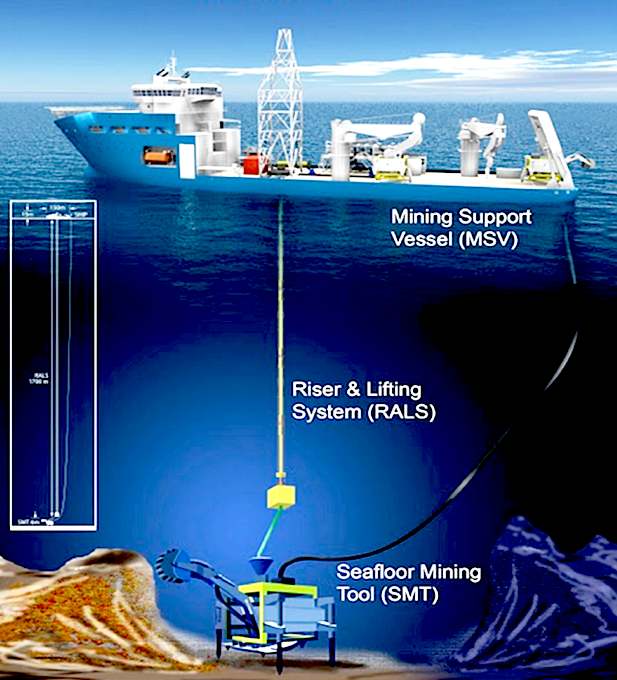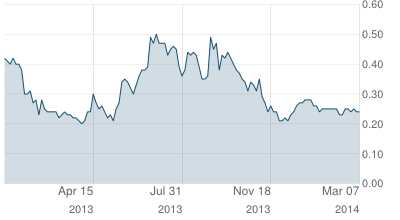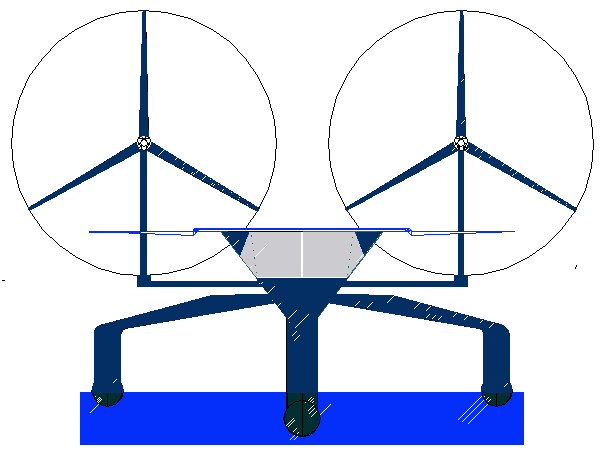|
DEEP SEA MINING SUMMIT 17-18 March 2014
|
|||||||||||||||||||||||||||||||||||||||||||||||||||||||||||||||||
|
Following the success of the previous Deep Sea Mining Summit, this year’s objective is to build on and identify new and innovative technology developments, technical know-how’s, and to focus on the challenges which face a new breed of deep sea miners and industry providers. The Deep Sea Mining Summit 2014 is set to deliver leading market intelligence and industry presentations on the latest in deep sea mining advances. This event promises to bring together a large array of solution providers, upcoming deep sea miners, members from the scientific community, and those within allied industries wanting to learn more about the opportunities within this emerging marketplace.
THE
EVENT FEATURES:
6. Unique opportunity to integrate with the investment community by demonstrating an insight into this emerging market place
WHO
MIGHT BE INTERESTED IN THIS EVENT
Leaders in Deep Sea Exploration Mid-Tier and Junior Exploration Upcoming Deep Sea Miners
CALL FOR SPEAKERS
* New developments in deep sea mining, a resources future
A surge in the demand for metals and minerals has led to an inflation of prices never seen before in history, particularly of many base metals that are found in seabed deposits. Both private and government-sponsored marine mineral exploration projects are on-going in efforts to respond to this ever increasing demand. To date, the International Seabed Authority has awarded 17 applications for seabed exploration licenses, 5 of which were approved in 2012 alone. As new technological solutions are being utilised for deep sea mining explorations we anticipate new commercial operations to develop further in the near term. The Deep Sea Mining Summit will be an opportunity for professionals engaged in relevant disciplines to report on their accomplishments and to exchange views. Presentations that focus on the challenges facing the deep sea mining sector, in particular, an update on recent technological and technical developments are most welcomed, along with other relevant topics of timely interest.
ADVANTAGES
OF ATTENDING THIS CONFERENCE
VENUE
Located at the end of Oxford Street near Park Lane, The Cumberland hotel in
London sits directly opposite Marble Arch, right near Hyde Park
Corner - which some consider to be in the heart of London.
DRAFT AGENDA 2014
DAY 1: MONDAY, 17 MARCH 2014
0830 - 0930 REGISTRATION AND MORNING REFRESHMENTS 0930 - 0945 OPENING ADDRESS
0945 - 1010SPECIAL: NAURU OCEAN RESOURCES
TECHNOLOGY FOCUS
1015 - 1040 NETWORKED UNDERSEA SYSTEMS FOR DEEP SEA OPERATIONS
1040 - 1105REACHING DEEPER - NEW WINCH DEVELOPMENTS GO FURTHER
1105 - 1130 MORNING COFFEE BREAK
1135 - 1200 NEW SUBMERSIBLE GEOTECHNICAL DRILLING
1200 - 1225CERTIFICATION OF SUBSEA MINING EQUIPMENT
1225 - 1250NEW DEVELOPMENTS AT KONGSBERG MARITIME
1250 - 1315USING TECHNOLOGIES, SENSORS, AND SYSTEMS FOR ENVIRONMENTAL MAPPING - EXPERIENCES FROM THE NORWEGIAN SHELF
1315 - 1430 NETWORKING LUNCHEON
1435 - 1500USING REAL-TIME SONAR TECHNOLOGY TO ASSIST IN NAVIGATION AND MEASUREMENT FOR SUBSEA MINING
SCIENTIFIC AND SUSTAINABILITY FOCUS
1505 - 1530TOOLS FOR LONG-TERM MONITORING HUMAN IMPACT - EUROPEAN OCEAN OBSERVATORY AND OTHER EXAMPLES
1530 - 1555UNDERWATER NOISE MODELLING AND ITS USE FOR ENVIRONMENTAL IMPACT ASSESSMENT
1555 - 1630AFTERNOON COFFEE BREAK
1635 - 1700 AN INNOVATIVE MULTILAYER RAPID ECOLOGICAL ASSESSMENT ADAPTED TO THE MANAGEMENT OF DEEP SEA HABITATS
1700 - 1725 FROM PRINCIPLES TO PRACTICE: A SPATIAL APPROACH TO SYSTEMATIC CONSERVATION PLANNING IN THE DEEP SEA
1725 - 1755A SCIENTIFIC VIEW ON THE OPERATIONS OF DEEP SEA MINING
1755 - 1820ASSESSING THE DEEP SEA ENVIRONMENTAL IMPACTS OF MINING
1820 - 1830CLOSING REMARKS
1830 - 1900 NETWORKING DRINKS RECEPTION
DAY 2: TUESDAY, 18 MARCH 2014
0830 - 0900 MORNING REFRESHMENTS 0900 - 0910OPENING ADDRESS CHAIRED BY PROF. DAVID CRONAN, IMPERIAL COLLEGE LONDONPROSPECTING AND EXPLORATION FOCUS 0 910 - 0935DEEPGREEN RESOURCES INC
0935 - 1000 DEEP SEA MINERAL RESOURCES IN NEW ZEALAND
1000 - 1025NORTH ATLANTIC MARINE MINERALS AND OCEAN MINING POTENTIAL
1025 - 1100MORNING COFFEE BREAK
1105 - 1130STATE-OF-THE-ART IN EXPLORATION AND EVALUATION OF SEAFLOOR MASSIVE SULPHIDE DEPOSITS
1130 - 1155EXPLORATION MODELS FOR EXTINCT AND SUB-SMS DEPOSITS: MINEROLOGY, GEOCHEMISTRY, AND OFF-AXIS REGIONS
1155 - 1220OPPORTUNITIES OF DEEP SEA MINING AND CHINA'S PREPARATIONS
1220 - 1245MARINE MINERALS FROM A RUSSIAN PERSPECTIVE
1245 - 1400 NETWORKING LUNCHEON REGULATORY AND POLICY FOCUS
1405 - 1430CALL US "BOSS" (BIG OCEAN SUSTAINABLE STATES) NOT "SIDS" (SMALL ISLAND DEVELOPING STATES)
1430 - 1455SPECIAL EIA REPORT: INTERNATIONAL SEABED AUTHORITY
1455 - 1520SEABED MINING DISPUTES: SETTLEMENT OPTIONS
1520 - 1600 AFTERNOON COFFEE BREAK
1605 - 1630THE EFFECTIVE LEGAL REGULATION OF SEABED MINING IN NATIONAL JURISDICTION AND IN THE AREA
1630 - 1655WHAT DOES THE COMMON HERITAGE OF MANKIND (CHM) MEAN?
1655 - 1715 CLOSING REMARKS
- See more at: http://www.seawork.com/exhibitor_list#sthash.6bQVx8XK.dpuf
- See more at: http://www.seawork.com/exhibitor_list#sthash.6bQVx8XK.dpuf
DEEP SEA MINING SUMMIT CONTACTS
General Enquiries: Email: lucy.hale@expoconferences.com
Polymetallic nodules, also called manganese nodules due to their high manganese content, are blackish-brown, irregularly to roundly formed concretions with diameters of about 1 to 6 cm. They occur in deep sea areas where sedimentation rates are low, and form due to the precipitation of Mn- and Fe-oxides as well as numerous other major and trace metals from sea water and the pore waters of the sediment. Growth rates are extremely low, with values varying between about 2 and 100 mm/Ma. The largest and most important deposits are found in the NE Pacific (in the so-called manganese nodule belt between the Clarion and Clipperton fracture zones), where commonly about 50% of the sediment surface is covered by manganese nodules. Economically relevant metals contained in the nodules are copper, nickel and cobalt, which together form up to 3 weight percent of the nodules and are, for example, required by the electro- and steel industry, amongst others.
ENGINEERING & TECHNOLOGY SEPT 2013 - DEEP SEA MINING BILL
Britain should be at the forefront of exploiting deep sea resources and make the most of seabed mining's "enormous potential", a Conservative MP in Corwnall has said.
DEEP SEA MINING
Deep sea mining is a relatively new mineral retrieval process that takes place on the ocean floor. Ocean mining sites are usually around large areas of polymetallic nodules or active and extinct hydrothermal vents at about 1,400 - 3,700 m below the ocean’s surface. The vents create sulfide deposits, which contain valuable metals such as silver, gold, copper, manganese, cobalt, and zinc. The deposits are mined using either hydraulic pumps or bucket systems that take ore to the surface to be processed. As with all mining operations, deep sea mining raises questions about potential environmental impact on surrounding areas. Environmental advocacy groups such as Greenpeace have argued that seabed mining should not be permitted in most of the world's oceans because of the potential for damage to deepsea ecosystems.
HISTORY
In the mid 1960s the prospect of deep-sea mining was brought up by the publication of J. L. Mero's Mineral Resources of the Sea. The book claimed that nearly limitless supplies of cobalt, nickel and other metals could be found throughout the planet's oceans. Mero stated that these metals occurred in deposits of manganese nodules, which appear as lumps of compressed sediment on the sea floor at depths of about 5,000 m. Some nations including France, Germany and the United States sent out research vessels in search of nodule deposits. Initial estimates of deep sea mining viability turned out to be much exaggerated. This overestimate, coupled with depressed metal prices, led to the near abandonment of nodule mining by 1982. From the 1960s to 1984 an estimated US $650 million had been spent on the venture, with little to no return.
Over the past decade a new phase of deep-sea mining has begun. Rising demand for precious metals in Japan, China, Korea and India has pushed these countries in search of new sources. Interest has recently shifted toward hydrothermal vents as the source of metals instead of scattered nodules. The trend of transition towards an electricity based information and transportation infrastructure currently seen in western societies further pushes demands for precious metals. The current revived interest in phosphorus nodule mining at the seafloor stems from phosphor-based artificial fertilizers being of significant importance for world food production. Growing world population pushes the need for artificial fertilizers or greater incorporation of organic systems within agricultural infrastructure.
Currently, the best potential deep sea site, the Solwara 1 Project, has been found in the waters off Papua New Guinea, a high grade copper-gold resource and the world's first Seafloor Massive Sulphide (SMS) resource. The Solwara 1 Project is located at 1600 metres water depth in the Bismarck Sea, New Ireland Province. Using ROV (remotely operated underwater vehicles) technology, Nautilus Minerals Inc. is first company of its kind to announce plans to begin full-scale undersea excavation of mineral deposits. However a dispute with the government of Papua-New Guinea has delayed production from its expected start in early 2013.
LAW
& REGULATION
MINERAL RESOURCES
The deep sea contains many different resources available for extraction, including silver, gold, copper, manganese, cobalt, and zinc. These raw materials are found in various forms on the sea floor, usually in higher concentrations than terrestrial mines.
EXTRACTION METHODS
Recent technological advancements have given rise to the use remotely operated vehicles (ROVs) to collect mineral samples from prospective mine sites. Using drills and other cutting tools, the ROVs obtain samples to be analyzed for precious materials. Once a site has been located, a mining ship or station is set up to mine the area.
There are two predominant forms of mineral extraction being considered for full scale operations: continuous-line bucket system (CLB) and the hydraulic suction system. The CLB system is the preferred method of nodule collection. It operates much like a conveyor-belt, running from the sea floor to the surface of the ocean where a ship or mining platform extracts the desired minerals, and returns the tailings to the ocean. Hydraulic suction mining lowers a pipe to the seafloor which transfers nodules up to the mining ship. Another pipe from the ship to the seafloor returns the tailings to the area of the mining site.
In recent years, the most promising mining areas have been the Central and Eastern Manus Basin around Papua New Guinea and the crater of Conical Seamount to the east. These locations have shown promising amounts of gold in the area's sulfide deposits (an average of 26 parts per million). The relatively shallow water depth of 1050 m, along with the close proximity of a gold processing plant makes for an excellent mining site.
THE ENVIRONMENT
Because deep sea mining is a relatively new field, the complete consequences of full scale mining operations are unknown. However, some researchers have said they believe that removal of parts of the sea floor will result in disturbances to the benthic layer, increased toxicity of the water column and sediment plumes from tailings. Removing parts of the sea floor could disturb the habitat of benthic organisms, with unknown long-term effects. Aside from the direct impact of mining the area, some researchers and environmental activists have raised concerns about leakage, spills and corrosion that could alter the mining area’s chemical makeup.
Among the impacts of deep sea mining, sediment plumes could have the greatest impact. Plumes are caused when the tailings from mining (usually fine particles) are dumped back into the ocean, creating a cloud of particles floating in the water. Two types of plumes occur: near bottom plumes and surface plumes. Near bottom plumes occur when the tailings are pumped back down to the mining site. The floating particles increase the turbidity, or cloudiness, of the water, clogging filter-feeding apparatuses used by benthic organisms. Surface plumes cause a more serious problem. Depending on the size of the particles and water currents the plumes could spread over vast areas. The plumes could impact zooplankton and light penetration, in turn affecting the food web of the area.
NAUTILUS
PROJECTS
2013-14
The
company has worked over the past number of years on the building of the Seafloor Production System. On November 13, 2012,
Nautilus announced that Management and the Board of Directors of Nautilus
had decided to terminate construction of its Seafloor Production System
for the financial preservation of the company. This was as a result of a dispute with the Independent State of Papua New Guinea
over costs that Nautilus says the government is obliged to meet for the project.
Nautilus
plans to grow its tenement holdings in the exclusive economic zones and territorial waters of
Fiji, Tonga, the Solomon Islands, Vanuatu and New Zealand as well as other areas outside the Western Pacific.
NAUTILUS STOCKS & SHARES
Nautilus is listed on the Toronto (TSX), and OTCQX (NUSMF) exchanges. Nautilus is said to have among its cornerstone shareholders, three of the world's largest resource companies, which, with its alliances and technical partnerships, places it as the world leader in deep water exploration and the associated mining of minerals systems.
OTCQX:
OTCQX -
US $
Toronto
Stock Exchange - C$
NAUTILUS CONTACTS
LINKS & REFERENCE
http://www.cares.nautilusminerals.com/ Nautilus Minerals Cares about the enviroment http://www.nautilusminerals.com/s/Projects-Solwara.asp http://en.wikipedia.org/wiki/Deep_sea_mining http://www.bgr.bund.de/EN/Themen/MarineRohstoffforschung/Tiefseebergbau/tiefseebergbau_node_en.html http://eandt.theiet.org/news/2013/sep/deep-sea-mining.cfm http://the-cumberland-a-guoman-hotel-london-england.cote-dazur-hotels.com/ http://www.cumberlandhotel.co.uk/ http://deepsea-mining-summit.com/ http://www.oceancouncil.org/ http://www.marine-data.co.uk/
PATENT PENDING - The Bluebird ZCC prototype concept is ideal for use as a high capacity energy-autonomous vessel, particularly for blue water deep sea surveys or support where endurance is a requirement. It can be equipped with an ROV launch and recovery system - that because the launch/recovery bay is submerged at all times makes recovery several times more effective than surface recovery systems the subject of physical wave and sensor aeration alignment difficulties, that so often hamper operations. With no requirement to refuel with diesel every so many thousand miles, the operational range is limited only to the humans on board, though drone and robotic operation is an option where the law allows. This vessel is COLREGs compliant, so may be operated in international waters. Such a vessel is thought to be a considerable asset to any exploration company in the long term.
|
|||||||||||||||||||||||||||||||||||||||||||||||||||||||||||||||||
|
This website is Copyright © 2014 Bluebird Marine Systems Ltd. The names Bluebird™, Bluefish™, Utopia Tristar™ and the blue bird and fish in flight logos are trademarks. The color blue is an essential element of the marks. All other trademarks are hereby acknowledged.
|
|||||||||||||||||||||||||||||||||||||||||||||||||||||||||||||||||



















